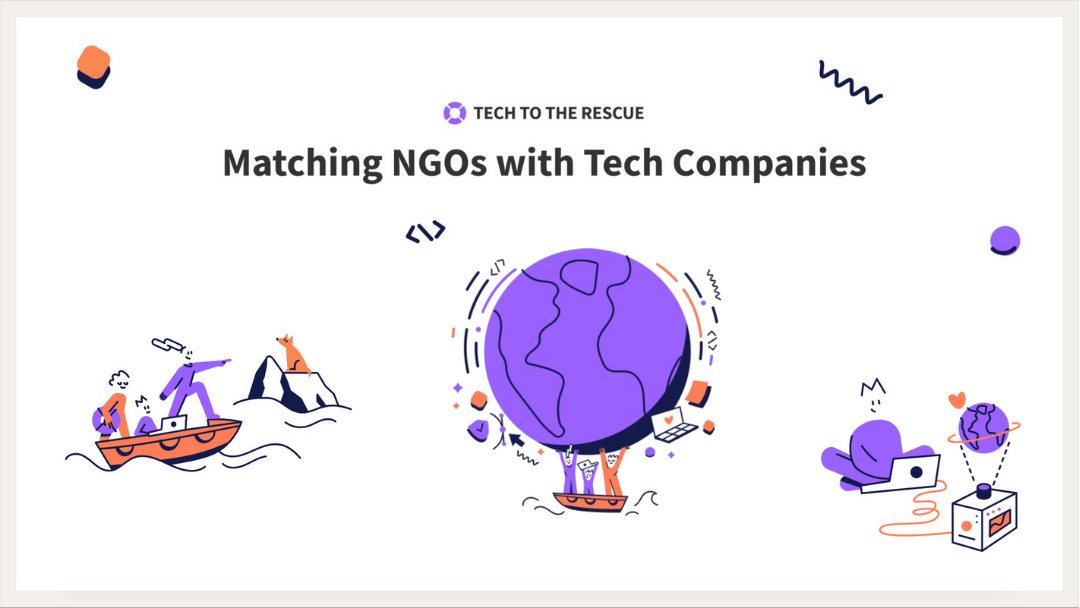Our platform was established in 2020 to match IT companies with nonprofit organizations and we can already see it becoming a fast-growing benchmark in the industry. We were created by a coalition of 10+ central European tech companies, and we are led by Jacek Siadkowski and Daniel Di Giusto, the co-founders who decided to quit their businesses to lead the movement. So far, we have managed to bring over 250 Tech companies together to implement technology solutions for good. All of this was made in an effort to solve the world’s most pressing social and environmental problems.
After just one year, the results are unquestionable. There has been a positive influence on the lives of more than 1,050,000 people in 12 countries. All of this has been achieved, even with limited in-house resources, thanks to a strong mission and an ability to bring people together. How can an aspiring global organization grow almost without assets? Let’s shed some light on it.
The biggest dilemma in the nonprofit sector
Developing a resource far from the organization’s existing skill base is challenging because the firm lacks the basic understanding of how to start and manage a project. This was easily observed in March 2020 when most of the nonprofit organizations, who were short of technological skills, could no longer achieve their mission. The pandemic set a new normal which pushed everyone into a more digitized reality.
Now, a year after the pandemic hit, the majority of non-governmental organizations identify digital transformation as their crucial initiative. According to a recent Salesforce Nonprofit Report, 85% nonprofits state that technology is key to their future success, but an overwhelming 81% face lack of funding for their strategic tech initiatives.
Butterfly effect in the IT sector
It was a challenge that leaders of the most prominent tech companies in Central Europe decided to tackle in March 2020. Over 140 companies decided to join forces and change the status quo in the IT sector. From all the companies, over 75% committed to donate 10 – 100 working hours a week to help nonprofit organizations, which offered an impressive total of about 23,000h/month to build tech solutions for good. All that created a huge potential for impact on society.
They did not stop there. Seeing how projects are working and what impact they bring to real people’s lives, in July, 2020 they decided to scale this initiative further. New partners joined, including Ashoka – one of the top social organizations which supports the world’s leading social entrepreneurs. The movement started gaining momentum.
As of December 2021, the Tech To The Rescue community includes over 250 IT companies and more than 300 nonprofits, operating in more than 12 countries worldwide, which signed up to use technology to scale up their potential influence. So far the community has delivered more than 50 pro-bono collaborations addressing real problems with huge potential to make the lives of millions of people better.
This month we registered a foundation and secured our seed funding round of €700k for furtner efforts to transform the movement into systemic change of the IT industry by establishing pro-bono engagement as a standard sustainability and employee engagement practice.
Making a systemic change
Tech industry leaders from Central Europe are showing a great example for others on how to collectively push a systemic change. Building good technology is no longer good enough. Building Technology solutions for good is what can distinguish globally conscious leaders from the rest and build the foundation for a sustainable economy that is not just about making money, but also about making purpose.
Among the founding partners of Tech To The Rescue, you can find impressive companies like 10Clouds, Blue Media, Cloud Technologies, Divante, Droids on Roids, Intive, Incredibles by Sebastian Kulczyk, LiveChat, Netguru, Objectivity, Packhelp, RTB House, SoftServe, Ten Square Games, and Tooploox, as well as individual investors like Adam Sobczak and Darek Żuk.
Our movement starts to be seen and lately we were featured in Forbes Polska, Gazeta.pl, and UAspectr.
